Dateline – October 9, 2013
One of the lesser known, but more interesting small mammals living in the Dallas/Fort Worth area is the ever charming American Mink. This is the selfsame animal so well known for its prized fur—the “Mink” in mink coat.

The American Mink is a semi-aquatic carnivore that feeds on rodents, fish, crustaceans, amphibians, and other small animals. They prefer to make their living near suitable bodies of water. Creeks, rivers, ponds, and lakes are all likely habitats. Mink are primarily nocturnal and very secretive. Because of this they are rarely seen even though they appear to be fairly common throughout the DFW metroplex.
I have never seen a Mink in the wild, but they have been on my wishlist for some time now. Every now and again I will make a concerted effort to locate and photograph one of these elusive animals. I made one such attempt in early October.
I often get tips from my readers about where to find and observe interesting wildlife. With Mink these reports have almost invariably centered around the lithe little animals seen crawling in and out of piles of big rocks. The Army Corps of Engineer frequently uses stones like these to shore up water ways in and around our area lakes, and when Minks are reported they are almost always near one of these places.
Evidently, Mink enjoy the natural network of tunnels and shelter created by these rock piles. Certainly their proximity to bodies of water is a big plus as well. These days, whenever I find a new place with piles of stone next to a suitable body of water, I can’t help but to wonder if there might be Mink living there. I recently found one such promising location, and I thought it might be time to conduct another brief mink survey.
I started by asking questions of people in the know, and sure enough Mink had been observed at this location! Better yet there were even pictures to back up the claim!
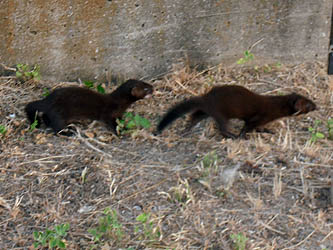
These photographs were taken several years ago at just the spot I was the most interested in. The pictures are a little blurry due to poor lighting conditions, but there is no mistaking that these are American Mink. A family of four (two adults and two juveniles) is captured in one of the photographs indicating that the Mink were breeding here and that a den was likely very nearby!
At the time, these Minks were reportedly seen quite frequently, and they were said to have become very accustomed to the presence of people. On occasion they even became bold enough to attempt to steal fish from the stringers of distracted fishermen!

Sightings of the Mink have died down over the last several years to the point where no one was quite certain when the last time they had been seen. What remained unclear is whether that was that a function of the mink being absent, or whether they were still present and just going unobserved.
Either way, I felt like the location still merited a closer look. It certainly appeared to be prime habitat, and I knew for sure that there had at least been mink here at one time.
I decided to start the Mink search by conducting a week long trail camera survey of the area. And when I stopped by one evening to set my cameras I was treated to a pleasant surprise. I fully expected that a side benefit of being out looking for Mink would be plenty of opportunities to observe and photograph many other species of urban wildlife as well. Sure enough, as I was setting up my trail camera for the Minks, I happened across one of my best looks looks ever at an Osprey—the beautiful Fish Eagle. This alone was enough to make the effort worth it!

When I returned a week later I was disappointed to discover that the trail camera survey had been a bust. Several Raccoons, an Opossum, and a Great Blue Heron had stepped in front of my cameras, but no Mink.
Trail camera surveys go that way sometimes. It’s not unusual for it to take several attempts to figure out the in and outs of a new area. A new species with habits I am unfamiliar with make the challenge all the more daunting.
I decided to try a different tack. Over the course of the next three evenings I would visit the location in person and observe likely spots from the cover of a one-man chair blind.
On my first evening out I spotted this Red-tailed Hawk as I was driving in. He was flying along the length of of Lewisville Lake dam at low altitude. We kept paces with each other for most of the way, and I was witness to a good deal of interesting hawk behavior as I drove along. I will share more about this observation later in the week.

Arriving on site, I unloaded my gear and started off down the trail toward the place where I intended to setup. Along the way I encountered this Armadillo foraging on the pathway.
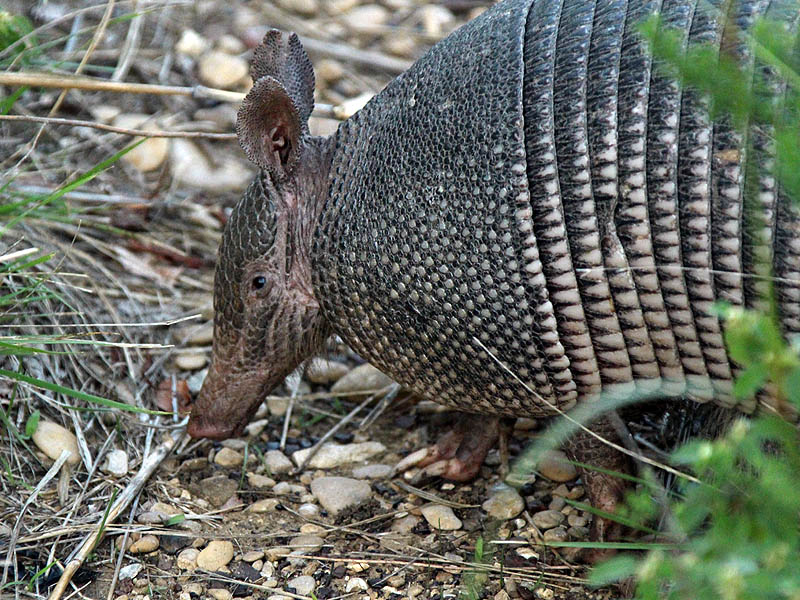
Armadillos are often very preoccupied with their pursuits and therefore they are not always fully aware of what is going on around them. That was the case with this individual. I stepped aside for just a moment and allowed this armored fellow the time he need to finish checking things out and to move on.
Soon I was on my way again and before long I was at a promising viewing spot. I quickly set up in my chair blind and began watching the nearby rock pile for movement.
The sun would be setting soon. In less than an hour it would be too dark for photographs and soon after it would be too dark to see! It was my hope that a nocturnal Mink would make an early appearance if I started watching just before dusk.
As it turns out, this area was a hotbed of wildlife activity. Shortly after I became comfortable in my blind I was treated to a marvelous show put on by a pair of Neotropic Cormorants.
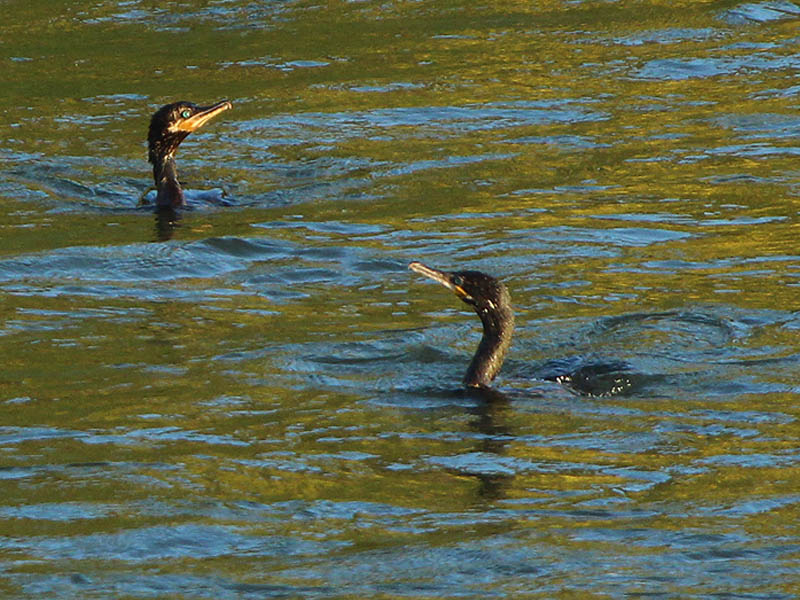
The pair of birds flew in down the length of the river and crashed into the water just in front of where I sat. They began working the rapids, frequently going beneath the surface of the water on their quest for small fish. There will be more about these two interesting birds later in the week as well.
Next to arrive on site was a Belted Kingfisher. This intriguing looking bird—resembling a Blue Jay on steriods—chattered her way up and down the river on several occasions. Each time she landed at places that were just a little too far away for anything more than just a documentary photograph.
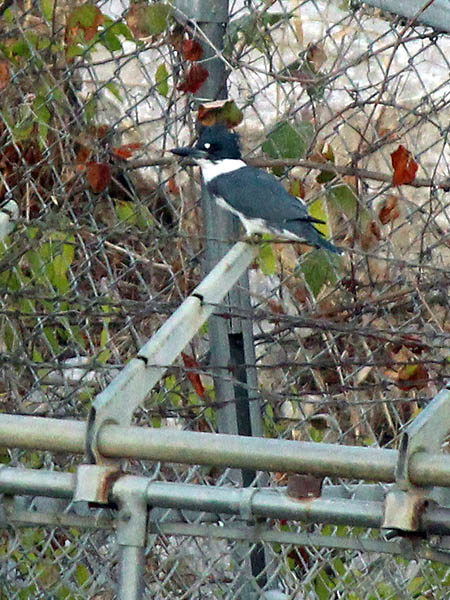
It is my understanding that it may be possibly to draw kingfishers closer by playing their call back to them. That may be worth a try some day, as kingfishers are typically very wary and are difficult to approach. Surely there is an iPhone app that can help with such a pursuit.
A few minutes later a stately Great Blue Heron made his appearance. The first year juvenile seemed cognizant of the fact that something was out of place here, as if he noticed my blind as something new but wasn’t quite sure what to make of it. Nervous, the big bird moved around frequently before finally making for the high branches in a nearby tree just before dark. After a couple of angry sounding squawks the Great Blue Heron settled down seemingly ready to roost for the night.
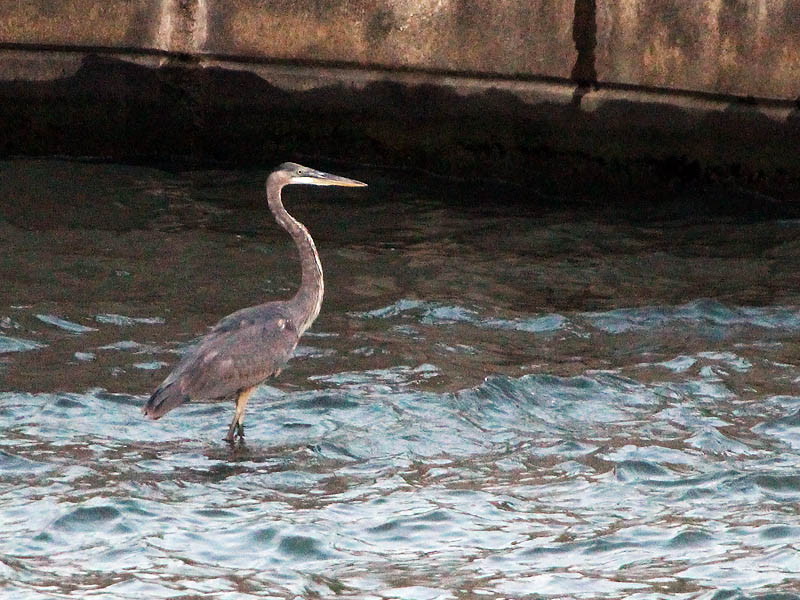
While all this was going on I managed to keep one eye on the rock pile across the way. I continually scanned the heap of stones watching for any sign of movement that might indicate the appearance of a Mink.
As the shadows lengthened with the setting of the sun, it became more difficult to see what was going on over on the far side of the river. With darkness falling, it was soon going to be time to call it a night.
Then, just as I was about to begin packing up, there was some movement on the rocks across the way. A small dark shape was rambling across stone pile and heading for the woods.
I quickly brought my camera to bear, but even through the telephoto lens I could not make out what kind of animal I was seeing. I started snapping pictures nonetheless, realizing that at home on the computer I might be able to see enough in the photographs to identify the mystery animal. I managed five or six quick pictures, and just like that it was over. The critter had scurried into the woods and out of sight.
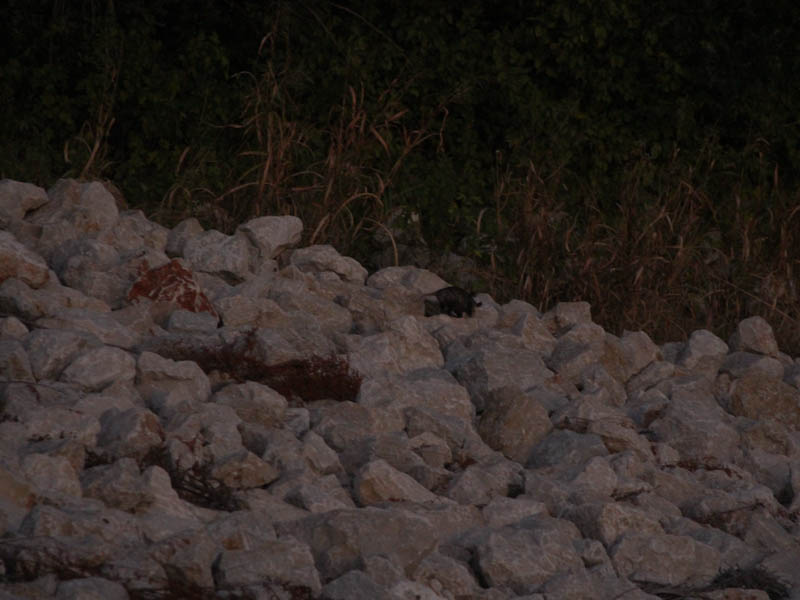
Back at the house later that evening I discovered that our mystery critter was revealed to be a common Virginia Opossum. The intrepid Opossum was likely denning somewhere inside the rock pile, and in fact, I spotted the same individual in the same location at roughly the same time over the next several evenings.
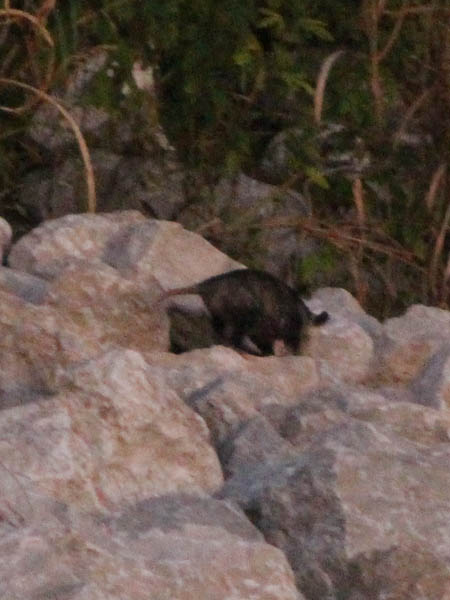
So, to take stock, this little project netting a couple of nice observations of an Osprey, a Red-tailed Hawk, a pair of Neotropic Cormorants, an Great Blue Heron, a Belted kingfisher, a Raccoon, an Armadillo, and a wayward Opossum—but no Mink.
It goes that way sometimes and that’s ok. It’s all part of the process. My judgement now is that the Mink have moved on for whatever reasons and that they are no longer living at this site. But, there is no question this location is a good one. I would not be surprised if the Mink do not make their way back to this place at some time in the future. I will keep an eye out for them!
In the meanwhile, all of the other great wildlife made the effort well worth it! As did the spectacular sunsets and moonrises. I will definitely be back!
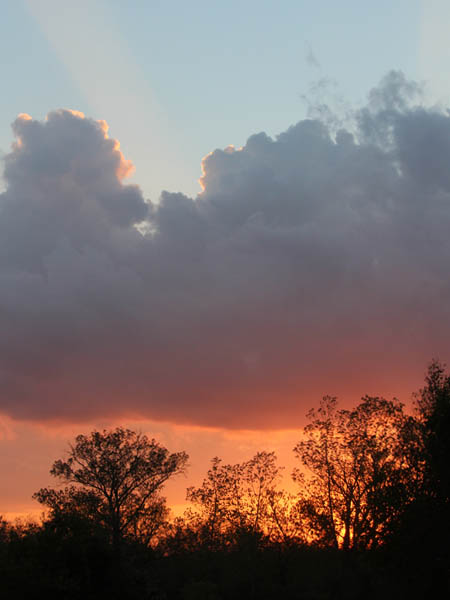



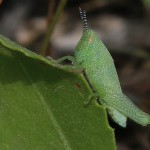

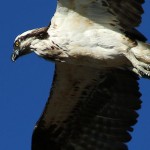

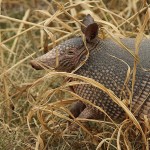
I saw a mink next to my house at the West Fork Trinity River. It was in the rocky area sniffing around. I didn’t get any photos, but it was still awesome to see!
I have seen two in Chicago suburbs…one was a carcass showing signs of eating, and the other was a fellow running along the River. That was so exciting, as they also are difficult to see, but are making a comeback to our region, along with bald eagles, the occasional wolf passing through and two IDNR documented mountain lions within 10 miles of Chicago city limits. It’s really exciting.
I captured a weasel like animal on our floodlight cam near Princeton, Tx. It appears to be a mink? Let me know what you think?
https://youtu.be/6WmigNRMbWw
EDITOR’S NOTE : Yes, the size and color looks right for a mink! https://dynamicmedia.zuza.com/zz/m/original_/2/9/29ea12b0-c11e-46e2-850a-22deb61e5989/Mink_on_the_run_Super_Portrait.jpg
I’ve seen them at Lake Ray Hubbard on the rocks between the train tracks and 30 near the marina. This was about a year ago before covid really got going. We were Kayak fishing marveling at how healthy someone’s escaped ferret seemed to be doing!
I’m at a friends house right now in rockwall off of lake ray Hubbard and saw one last night after they told me what it was. Google led me here!
I just saw two tonight at Lake Arlington.
I was able to get a video.
I saw a mink today on a farm just out side of Paris tx. no pic but very sure of what I saw ..